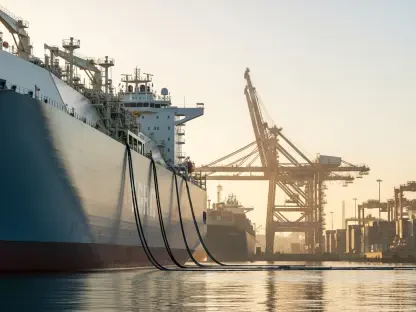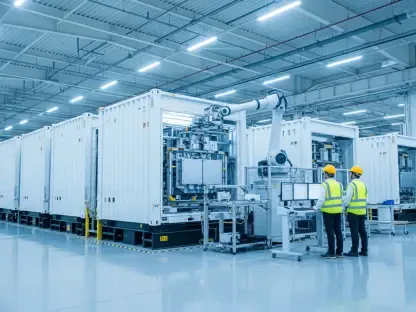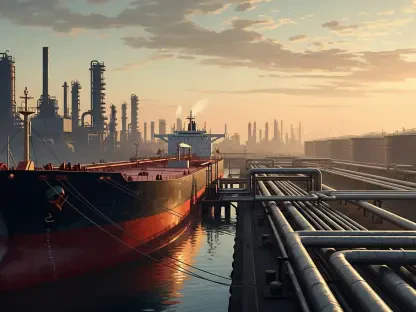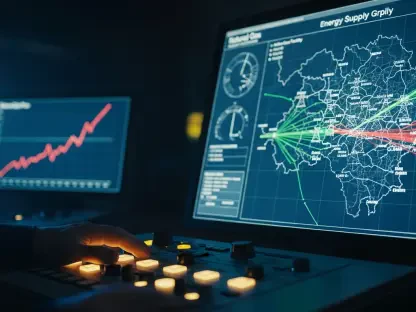In a world where energy sustainability and gender equity increasingly dominate policy discussions, Christopher Hailstone’s expertise in utilities and renewable energy positions him at the forefront of these global conversations. With the World Bank expanding its focus on energy access and equality, Hailstone offers insights into the intricacies of energy financing and the challenges of addressing diverse agendas in international development.
Can you explain the World Bank’s plans to expand energy access and how they intend to finance these projects?
The World Bank has committed to improving energy access by exploring varied financing routes, including nuclear energy, to provide affordable and reliable energy across regions in need. Their target is to reach 300 million Africans by 2030, reflecting a strong ambition to bridge existing energy gaps. Financing these efforts may involve a mix of traditional loans, innovative financial instruments, and collaborative projects with governments and private stakeholders to ensure energy not only reaches more people but does so in a sustainable and economic manner.
What are the potential energy financing options that the World Bank is considering, specifically concerning nuclear energy?
The Bank is contemplating lifting previous prohibitions on funding nuclear energy projects. This signals a shift towards diversifying its energy portfolio, aligning with calls for a broader mix of energy sources to meet global demands sustainably. Nuclear energy is seen as a potential solution for providing substantial power outputs while mitigating carbon emissions, addressing both climate goals and energy access challenges.
How does the World Bank’s strategy align with the directives from the U.S. President Donald Trump’s administration regarding energy financing?
Under President Trump’s directive, there’s been a push for broadening energy financing, and the World Bank’s exploration of nuclear energy fits within this framework. The emphasis has been on affordable energy alternatives, including fossil fuels, to enhance energy security and economic growth without necessarily prioritizing climate targets, which marks a distinct approach compared to previous administrations.
Can you elaborate on the World Bank’s gender and equality strategy that the steering committee endorsed?
The gender and equality strategy endorsed aims to expand economic opportunities for women, with initiatives targeting 80 million women and women-led businesses. It’s about capital empowerment, human capital investment, and fostering environments where gender does not limit access to economic resources and opportunities. This strategy underscores the importance of inclusion and equality as pillars of development.
Why did U.S. Treasury Secretary Scott Bessent criticize the World Bank for “mission creep,” and how does it impact the Bank’s focus?
Bessent’s criticism revolves around the perception that the World Bank has strayed from its primary focus on economic development and stability by delving into broader issues like climate change and gender. This alleged “mission creep” suggests that the Bank may dilute its resources and focus, potentially impacting its efficacy in addressing core economic concerns while navigating these additional arenas.
What are the main objectives of the World Bank and the International Monetary Fund joint Development Committee?
The Development Committee is tasked with steering collaborative efforts between the World Bank and IMF to tackle global development challenges. Their objectives include enhancing energy access, promoting economic stability, and indiscriminately driving sustainable development initiatives across regions of varying needs, ensuring alignment with individual countries’ growth strategies and priorities.
How does the World Bank plan to provide energy access to 300 million Africans by 2030, and what challenges might it face?
Their strategy entails deploying diverse energy solutions, from traditional to innovative sources, aiming to ensure coverage that is both extensive and resilient. Challenges include infrastructural limitations, political landscapes, and negotiating blended financing modalities amid stringent fiscal constraints that can affect realization timelines.
Why did the Development Committee recommend the exploration of support for nuclear energy?
While nuclear energy presents a viable avenue for large-scale, low-carbon power generation, the recommendation comes from recognizing it as a potentially stable solution amidst fluctuating fossil fuel markets and increased climate accountability pressures. It’s envisaged as part of a balanced energy mix supporting long-term energy security.
How does the World Bank aim to balance energy affordability with climate financing targets?
Balancing energy affordability with climate targets requires an intricate approach to designing financial models that do not impose excessive costs on energy access while still incentivizing low-carbon initiatives. It’s about finding synergies between economic viability and environmental stewardship, ensuring that investments lead to tangible improvements without compromising climate goals.
What initiatives does the World Bank have in place to promote equality and support for women entrepreneurs?
Their initiatives focus on providing financing avenues, mentorship programs, and access to markets for women entrepreneurs. By nurturing businesses led by women, the World Bank hopes to catalyze economic growth and spur innovation, thus reducing inequality and empowering communities from the ground up.
How does the EU’s stance differ from the U.S.’s on the World Bank’s focus on women’s rights and climate change?
The EU’s stance seems more progressive, avidly championing women’s rights and climate change initiatives as core components of development policy. This contrasts with the U.S.’s apparent focus on conventional economic issues, demonstrating differing priorities between the two large stakeholders in navigating the multifaceted development terrain.
How significant are the EU and U.S. shareholdings in the World Bank, and what implications do they have for shaping its strategy?
With substantial shares, the EU and U.S. wield significant influence over the World Bank’s strategic direction, leveraging their financial power to support policy preferences. These positions can drive or impede initiatives based on political agendas, impacting the Bank’s projects and regional commitments in nuanced ways.
Was there any notable shift in the U.S.’s participation or influence during the Development Committee meetings?
There was a discernable shift, as the U.S. did not lead discussions in the traditional opening slot, which might reflect changing priorities or reduced readiness to support conventional propositions. Such shifts can imply strategic recalibrations that may influence broader committee dynamics.
What might be the consequences if the U.S. does not fulfill its pledge to provide $4 billion for the International Development Association?
Failure to fulfill the pledge could undermine ongoing efforts to support the world’s poorest countries, potentially leading to funding shortfalls that could stall projects aimed at poverty alleviation, infrastructure development, and essential service provision, affecting millions depending on these outcomes.
What factors will influence the U.S. decision to proceed with its financial pledge made by former President Joe Biden?
Budgetary considerations and political reforms will likely play a pivotal role in shaping the U.S.’s commitment to this pledge. Internal deliberations around fiscal policy priorities and alignment with broader diplomatic goals will influence the decision-making process, weighing national versus international benefits.









